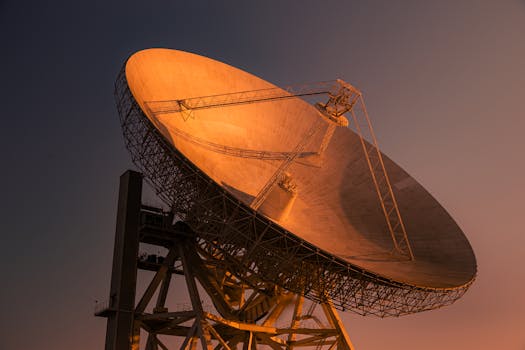Satellite Telecommunications 2023: Key Developments and What They Mean for the Industry

Satellite Telecommunications 2023: Key Developments and What They Mean for the Industry
Satellite telecommunications 2023 has been marked by significant developments that are transforming the industry. Satellite telecommunications 2023 is an exciting time for the industry, with numerous advancements in technology, services, and applications. The demand for satellite-based connectivity has increased exponentially, driven by the growing need for global communication, navigation, and remote sensing.
The satellite telecommunications industry has experienced remarkable growth in recent years, with the global satellite market expected to reach $442.59 billion by 2028, growing at a compound annual growth rate (CAGR) of 7.1%. This growth can be attributed to the increasing adoption of satellite-based services in various sectors, including telecommunications, navigation, and remote sensing.
Key Developments in Satellite Telecommunications 2023
Several key developments have shaped the satellite telecommunications industry in 2023. One of the most significant advancements is the launch of new satellite constellations, such as OneWeb and Amazon Kuiper Systems. These constellations aim to provide global internet connectivity, bridging the digital divide and enabling access to remote and underserved communities.
Another significant development is the introduction of advanced satellite technologies, such as Very High Throughput Satellites (VHTS) and High Throughput Satellites (HTS). These technologies offer higher bandwidth and faster data speeds, enabling the delivery of high-quality services, including broadband internet, video streaming, and telecommunications.
The increasing adoption of 5G networks has also driven the demand for satellite-based services. Satellite communications are playing a crucial role in the deployment of 5G networks, providing backhaul connectivity and enabling the delivery of high-speed data services in remote and hard-to-reach areas.
Implications for the Industry
The key developments in satellite telecommunications 2023 have significant implications for the industry. The growth of satellite-based services is expected to drive the demand for satellite capacity, leading to increased revenue for satellite operators and service providers.
The introduction of new satellite constellations and advanced technologies is also expected to drive innovation and competition in the industry. The increasing adoption of satellite-based services is likely to lead to new business models and revenue streams, creating opportunities for industry players to expand their offerings and reach new markets.
However, the growth of the satellite telecommunications industry also poses challenges, such as the need for sustainable and responsible satellite operations. The increasing number of satellites in orbit is raising concerns about space debris and the environmental impact of satellite launches.
Conclusion
In conclusion, satellite telecommunications 2023 has been marked by significant developments that are transforming the industry. The launch of new satellite constellations, the introduction of advanced satellite technologies, and the increasing adoption of 5G networks are driving the growth of the industry and creating new opportunities for industry players.
As the industry continues to evolve, it is essential to address the challenges posed by the growth of satellite telecommunications, including the need for sustainable and responsible satellite operations. By embracing innovation and collaboration, the satellite telecommunications industry can ensure a bright and sustainable future for global connectivity.




